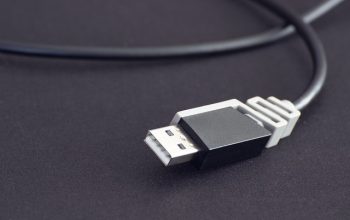Navigating the vehicle title transfer process post-purchase can be a labyrinth of paperwork and regulations, especially for those unfamiliar with the procedure. To ensure a seamless transition of ownership, understanding each step is crucial. This article demystifies the DMV title transfer requirements that vary by state, clarifies the associated fees and costs, and outlines the essential documents needed for a smooth transaction. With a focus on practical steps to initiate the title transfer after car purchase, we provide a comprehensive guide to expedite your process. Additionally, tips for efficient handling of the transfer are presented, alongside the recommendation of utilizing a DMV title transfer checklist to maintain organization and avoid common pitfalls. Whether you’re a first-time buyer or an experienced auto aficionado, these insights will streamline your vehicle title transfer experience.
- Understanding the Vehicle Title Transfer Process
- State-Specific DMV Title Transfer Requirements
- Navigating Title Transfer Fees and Costs
- Essential Documents for a Smooth Title Transfer
- Step-by-Step Guide to How to Transfer a Car Title
- Tips for Avoiding Delays in the Title Transfer Process
- Utilizing a DMV Title Transfer Checklist for Efficiency
Understanding the Vehicle Title Transfer Process

When acquiring a new vehicle or purchasing a used one, understanding the vehicle title transfer process is paramount to ensure a seamless transition of ownership. The DMV title transfer requirements can vary significantly from state to state, necessitating careful attention to the specific regulations governing your jurisdiction. To initiate the title transfer after car purchase, one must complete the necessary forms provided by the Department of Motor Vehicles (DMV), which typically include a Bill of Sale and an application for a certificate of title. These documents serve as proof of transaction and ownership claim, respectively. Additionally, applicants must submit the vehicle’s existing title, if available, along with any required identification and proof of insurance or vehicle inspection, depending on the state’s mandates.
Title transfer fees and costs are another variable element in this process, as each state sets its own rates for processing the title transfer. These can include a range of charges from filing fees to registration fees. To avoid any potential penalties or delays, it is advisable to research your specific DMV title transfer requirements beforehand. A DMV title transfer checklist can be an invaluable resource, ensuring that all necessary steps are taken in the correct order and that no critical paperwork is overlooked. This checklist typically includes items such as the completed application forms, the existing title (if applicable), proof of insurance or roadworthiness, identification, residency verification, and payment for the applicable fees. By being well-prepared and understanding the nuances of your state’s DMV process, you can facilitate a swift and efficient transfer of your vehicle title, allowing you to legally operate your new vehicle without unnecessary interruptions.
State-Specific DMV Title Transfer Requirements

Navigating the vehicle title transfer process can be streamlined with an understanding of state-specific DMV title transfer requirements. Each state’s Department of Motor Vehicles (DMV) has distinct protocols and forms that must be adhered to when transferring a vehicle title, especially after a car purchase. These protocols are designed to ensure the transfer is legal, recorded, and properly documented. The process typically involves submitting the current title with a completed application for title transfer, along with any required identification and proof of insurance or vehicle registration. Additionally, applicants must familiarize themselves with title transfer fees and costs, as these can vary significantly from one state to another. These fees often cover processing expenses and may include additional taxes or registration fees based on the vehicle’s value and the specific local regulations. To expedite the title transfer after car purchase, it is advisable to prepare all necessary documentation ahead of time, understand the fee structure in your jurisdiction, and visit your state’s DMV with all required information at hand. This proactive approach can significantly reduce the time needed for the transfer and help avoid any potential penalties or delays associated with incomplete submissions or missed deadlines. Utilizing a DMV title transfer checklist can be an invaluable resource to ensure all steps are followed correctly, making the process more efficient and less daunting for both new and experienced vehicle owners.
Navigating Title Transfer Fees and Costs

When embarking on the vehicle title transfer process following a car purchase, one must be aware of the DMV title transfer requirements specific to their state. These requirements are designed to establish legal ownership and ensure that the vehicle’s history remains accurately documented. A critical aspect of this process is understanding the various title transfer fees and costs associated with it. These fees can encompass everything from filing fees to registration fees, and they may differ significantly depending on the state and county in which you reside. To navigate these costs effectively, start by consulting your local Department of Motor Vehicles (DMV) for a detailed fee structure. This will help you budget accordingly and avoid any unexpected charges that could delay the transfer. It’s advisable to gather all necessary documentation, including proof of purchase, the previous title, identification, and any required forms, before proceeding to the DMV. By doing so, you can streamline the process and ensure a prompt and successful title transfer after car purchase. Remember to check if there are any additional taxes or surcharges that may apply, as these can affect the total cost of transferring the title. Stay informed about the exact paperwork needed for your state, as each has its own set of DMV title transfer requirements to adhere to, which will facilitate a smoother and more efficient transfer of vehicle ownership.
Essential Documents for a Smooth Title Transfer

When navigating the vehicle title transfer process, having all the necessary documents on hand is crucial to ensure a swift and error-free transaction. The DMV title transfer requirements can vary by state, but generally, you will need the current title or registration certificate if available, as it typically serves as proof of ownership. If the title is not in your name, additional paperwork may be needed to establish your right to the vehicle. Other essential documents that facilitate a smooth title transfer include a completed application for title and registration, which can often be found on the state’s DMV website, and proof of vehicle insurance as required by law. Furthermore, be prepared with a valid photo ID to verify your identity during the transfer process.
Title transfer fees and costs are another aspect that differs by jurisdiction, so it’s important to be aware of these beforehand. These fees typically include a state title transfer fee, which can vary based on the vehicle type, age, and other factors. Additionally, you may need to pay for any necessary tax or registration fees associated with the car purchase. To avoid delays, research your specific DMV title transfer requirements ahead of time, including acceptable forms of payment. Preparing all required documents and understanding the associated costs will help expedite the process and ensure compliance with state regulations. This preparation is particularly important for used vehicles, where clear title history can affect the transaction’s complexity. Utilizing a DMV title transfer checklist can be an invaluable resource to ensure all “T’s” are crossed and all “I’s” are dotted, making the process of how to transfer a car title as straightforward as possible.
Step-by-Step Guide to How to Transfer a Car Title

Navigating the vehicle title transfer process can be streamlined with careful preparation and understanding of the DMV title transfer requirements specific to your state. To initiate the transfer, obtain the necessary title and lien documentation, ensuring it reflects accurate information. This typically involves completing the appropriate application form provided by your state’s Department of Motor Vehicles (DMV). Next, submit the current title and, if applicable, a bill of sale or proof of purchase to validate the transaction. Depending on the jurisdiction, additional documents may be required, such as proof of insurance, odometer disclosure, and/or a smog inspection certificate.
Once all paperwork is in order, present it at your local DMV along with the relevant title transfer fees and costs. These fees are determined by state regulations and may vary, so it’s important to be aware of them beforehand to avoid any unexpected expenses. After submission, the processing time can differ; some states offer expedited services for an additional fee if you need the transfer completed quickly. Pay attention to the instructions provided by the DMV upon submission, as they may include steps for affixing a temporary tag and other post-transfer procedures. Completing these steps successfully will ensure that you legally own the vehicle and avoid any potential penalties or delays. Utilizing a DMV title transfer checklist can greatly assist in managing the necessary documentation and fees, making the entire process more efficient and less daunting for both first-time buyers and seasoned car owners.
Tips for Avoiding Delays in the Title Transfer Process

To navigate the vehicle title transfer process efficiently, it is crucial to be well-prepared and aware of the DMV title transfer requirements specific to your state. Begin by gathering all necessary documentation ahead of time. This typically includes the current vehicle title, proof of insurance, a valid driver’s license or state identification, and any bill of sale or purchase agreement. Ensure that all names on the title match the names on the photo IDs to avoid delays. Next, familiarize yourself with the title transfer fees and costs associated with your transaction. These can vary significantly from one state to another, so check your local DMV’s fee schedule in advance. To expedite the process after car purchase, consider submitting all paperwork electronically if your state offers this service. Many DMVs have online portals that allow you to fill out forms and upload documents, which can significantly reduce wait times. Additionally, make sure to complete each form accurately; incomplete or incorrect information is a common cause of processing delays. Lastly, schedule an appointment at the DMV or select a service option that minimizes your time spent on-site. By being organized, informed, and proactive, you can smoothly transfer your car title without unnecessary setbacks.
Utilizing a DMV Title Transfer Checklist for Efficiency

When navigating the vehicle title transfer process, utilizing a DMV title transfer checklist can significantly streamline the experience. This checklist serves as a comprehensive guide, ensuring all necessary steps are completed in sequence. It begins by outlining the DMV title transfer requirements specific to your state, which typically include completing the correct form, providing proof of ownership such as the current title or purchase agreement, and submitting the required identification documents. The checklist also notes the title transfer fees and costs associated with the process, which can vary widely between states, counties, and even municipalities. By having a clear outline of these costs ahead of time, you can budget accordingly and avoid any surprise expenses. Additionally, the checklist aids in tracking the submission of required paperwork, scheduled visits to the DMV, and any follow-up actions needed once the transfer is underway. This proactive approach not only saves time but also ensures compliance with state regulations, thus avoiding potential penalties or delays that can arise from incomplete or incorrect paperwork. Whether you’re a first-time buyer or have experience with title transfers after car purchase, a well-organized checklist is an indispensable tool for managing the myriad details involved in transferring a vehicle title efficiently and effectively.
Navigating the vehicle title transfer process post-car purchase can be an intricate task due to varying state regulations and associated costs. This article has demystified the steps involved by breaking down the DMV title transfer requirements, highlighting the importance of understanding each state’s specific guidelines, and outlining the title transfer fees and costs one must consider. With a comprehensive checklist at hand, individuals can approach the process with confidence, ensuring they have all necessary documents and are prepared for any associated expenses. By following the detailed guide on how to transfer a car title and adhering to tips for efficiency, you can smoothly transition vehicle ownership without unnecessary delays or penalties. Remember to keep the DMV title transfer checklist handy throughout this process to maintain a clear and organized approach.



